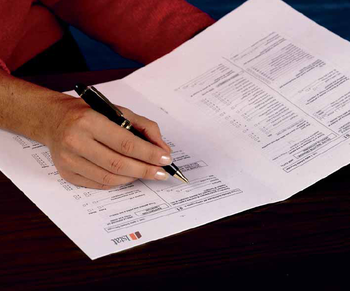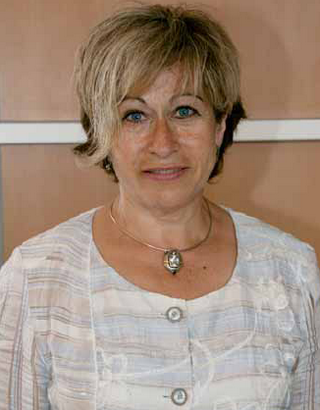Archive:EU statistics on income and living conditions – Helping to fulfil data needs of the 21st century
This Statistics Explained article is outdated and has been archived - for recent articles on living conditions and social protection see here.
- Published in Sigma - The Bulletin of European Statistics, 2010/02
Inna Steinbuka, Director of the Social and Information Society Statistics Directorate at Eurostat, heads an international task force dealing with the ‘multidimensional measurement of the quality of life’. The task force, part of the newly formed Sponsorship on Measuring Progress, Well-being and Sustainable Development is jointly chaired by Eurostat and the French Statistical Office, Insee. Sigma spoke to Ms Steinbuka to find out more about the work of the task force.
Introduction
‘Our work directly reflects the requirements of today – the need to modify statistical systems and develop ways of measuring growth, taking into account social well-being,’ said Ms Steinbuka. ‘The development in recent years of the EU statistics on income and living conditions (EU-SILC) is a major step in that direction.’
EU-SILC is a survey of private households. It was launched in 2003 on the basis of a gentlemen’s agreement between Eurostat and six EU Member States (Austria, Belgium, Denmark, Greece, Ireland, Luxembourg) and Norway, and formally launched in 2004 following a European Commission Regulation in 15 countries. In 2005, the survey was expanded to cover all of the then EU-25 Member States, together with Norway and Iceland. Bulgaria launched EU-SILC in 2006, while Romania, Switzerland and Turkey introduced the survey in 2007.
‘Future data gathering, adapted to follow the recommendations of the Stiglitz Commission and the Communication, GDP and Beyond, will mean reliance on a combination of different data sources and the creation of a number of new indicators,’ said Ms Steinbuka. ‘EU-SILC, which well reflects developments in the social situation in Europe, will play an important role in this process. The Sponsorship task force will use the experience gathered in the development of EU-SILC in its work on future indicators to measure the quality of life of a society.’
Warsaw conference
An international conference on EU-SILC, held in Warsaw last March brought together data producers, institutional users of statistics and members of the academic community. The meeting allowed a unique insight into the state of play of social statistics in Europe.
During the conference, Professor Anthony B. Atkinson, a leading expert in the area of micro-economics and economics of income distribution and poverty, as well as a member of the European Statistical Governance Advisory Board, described the harmonised EU-SILC database as a ‘valuable source’ in the development of new indicators in line with the recommendations of the Stiglitz Commission and the Commission Communication, GDP and Beyond.
‘I agree with Prof. Atkinson that the potential of our survey for future research cannot be overestimated,’ said Ms Steinbuka. ‘EU-SILC is very helpful to policymakers in their analysis and monitoring of the problems affecting a large proportion of the European population as, among other things, it provides information on the levels of poverty, deprivation and social exclusion on our continent.’
In line with Europe 2020 strategy

Eurostat figures show that 120 million people, or 24% of the EU-27 population, were at risk of poverty or social exclusion in 2008.
‘Reducing the number of Europeans who are at risk of poverty or social exclusion by at least 20 million people is one of the goals of the Europe 2020 strategy,’ said Ms Steinbuka.
‘The three sub-indicators which measure the progress in this area – the at-risk-of-poverty rate, the severe material deprivation rate and the persons living in households with low work intensity– are all calculated on the basis of EU-SILC data.’
Ms Steinbuka explained that the measurement of the quality of life of both the general and vulnerable populations will allow the measurement of gaps in the quality of life in individual countries. It will also enable comparisons between the EU Member States in an area where demand for fresh statistical information is growing rapidly. ‘Our task force is working hard to develop modern indicators which will allow a better description of the situation of this vulnerable part of the society and let us compare it with the rest of the population in the EU Member States.’
Future steps
Ms Steinbuka said that the task force hopes to soon be able to describe the vulnerable groups in greater detail. ‘Once we have the scores for the entire and vulnerable populations, we will be able to go further, bring more precision into our research, i.e. describe the vulnerable groups by age, sex, education and income,’ she said.
Despite persisting challenges, such as problems with data comparability and timeliness, Ms Steinbuka remains optimistic.
‘I am convinced that we will get there, largely thanks to the EU-SILC database, which today features the full statistical coverage and time series for 29 European countries,’ she said.
‘We have come a long way since 2003, when the first EU-SILC figures were collected. There is a growing need for reliable and detailed data on the quality of life in the European Union states. These figures will only gain in importance as EU policymakers go about implementing the Europe 2020 strategy’.
Further Eurostat information
Publications
- SIGMA - The Bulletin of European Statistics, 02/2010: GDP & Beyond; Focus on measuring economic development and well-being
- Sustainable development in the European Union - 2009 monitoring report of the EU sustainable development strategy
Dedicated section
Other information
- GDP and Beyond: Measuring progress in a changing world (Commission Communication COM final 433/2009)
